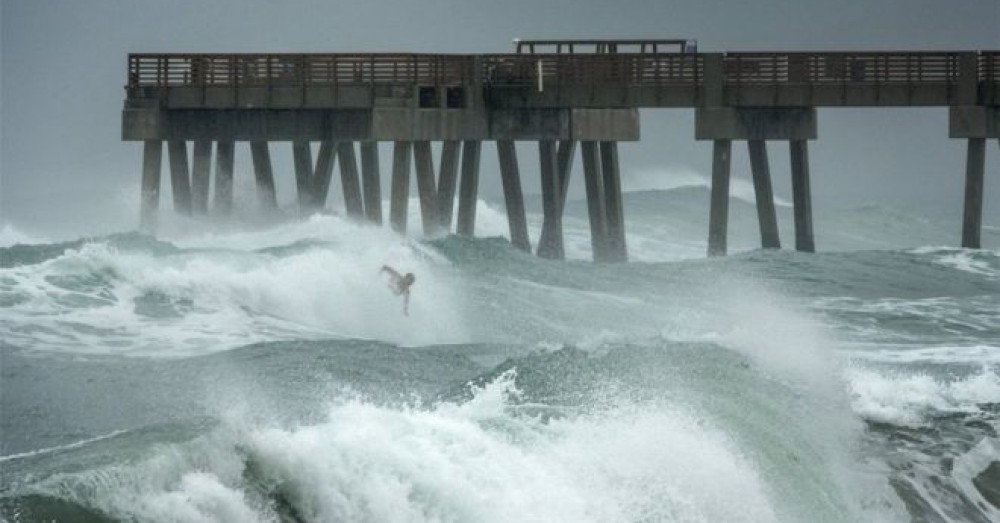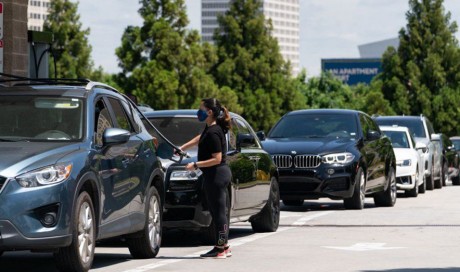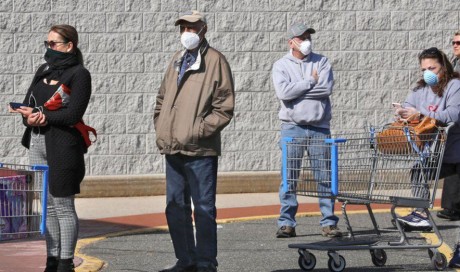Hurricane Isaias has blasted in to North Carolina, crossing the coast 40 miles (65km) south-west of Wilmington.
The National Hurricane Center (NHC) posted a statement on social media saying that Isaias made landfall at 23:10 EDT (03:10 GMT Tuesday).
It added that the hurricane had maximum sustained winds of 85mph (140km/h).
Isaias was downgraded to a tropical storm after hitting islands in the Caribbean, but was recategorised as a category one hurricane on Monday.
It caused the deaths of two people in the Caribbean.
Isaias is the ninth named storm of the year. The NHC warned earlier Isaias would cause heavy rainfall, resulting in "widespread minor to moderate river flooding" and flash floods in the eastern Carolinas and mid-Atlantic as it moves along the US East Coast.
In north-eastern South Carolina and southern North Carolina, officials said "there is the danger of life-threatening storm surge inundation along portions of the immediate coastline and adjacent waterways".
Storm surges along the eastern seaboard could reach up to 5ft (1.5m) with over 8in (20cm) of rainfall, while tropical storm force winds and gusts will also reach up to the Chesapeake Bay region.
The storm this weekend scraped by Florida and earlier on Monday, its centre remained offshore of South Carolina.
In the Dominican Republican and Puerto Rico, Isaias killed at least two people. The storm uprooted trees, destroyed crops and homes and caused flooding and landslides.
Isaias is bearing down upon popular tourist destinations of Myrtle Beach, South Carolina, and Wilmington, North Carolina. Tornado warnings are also in effect until Tuesday.
It is projected to weaken after making landfall, but farther north, New York City is preparing for storm surges as well.
State officials in regions preparing for hurricanes this season have also been grappling with opening shelters that comply with social distancing regulations.
North Carolina Governor Roy Cooper - who on Friday declared a state of emergency - urged residents during a news conference on Monday to be on the alert and stay safe.
"North Carolinians have had to dig deep in recent months to tap into our strength and resilience during the pandemic. That hasn't been easy.
"But with this storm on the way, we have to dig a little deeper. Let's keep each other safe from the wind and water as well as from the virus."
Mr Cooper said the state is also equipped to open storm shelters where people can socially distance.
Facing a natural disaster in a pandemic
US disaster agencies have updated disaster preparedness and evacuation guidance in light of Covid-19.
The Centers for Disease Control recommends families add Covid-19 items to a disaster "go kit" that can be taken in an emergency situation:
- Hand sanitiser
- Soap (liquid or bar)
- Disinfectant wipes
- At least two face coverings per person (though masks should not be worn by those under two years old or those who are unconscious)
Here are some key guidelines for protecting yourself against Covid-19 if you must evacuate to a shelter:
- Wash your hands often
- Keep 6ft of distance from anyone not among your household
- If possible, wear a face covering and wash it regularly
- Avoid sharing food and drinks
- Frequently disinfect your area in the shelter (including toys and electronics)
Share This Post















